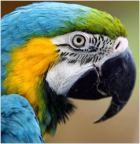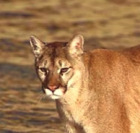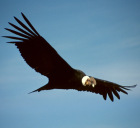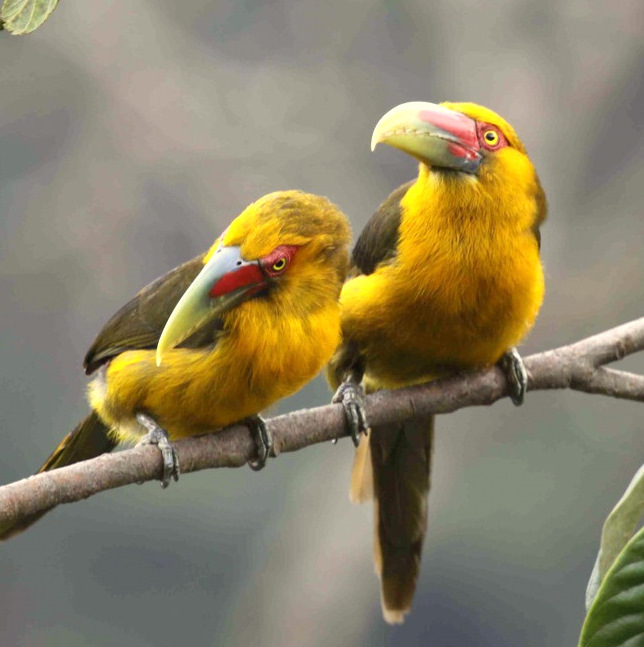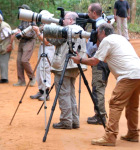ITATIAIA NATIONAL PARK: Cloud Forests and the Brazilian Alpine
Itatiaia National Park is Brazil's oldest, established in 1937. Situated on a forested slope, the park extends up to 9,104'. Rich Atlantic coastal rain forest covers the lower area where the hotels are situated. Moving up the mountains the vegetation changes and at around 5,500' a very different flora provides habitat to an almost complete change of fauna. At around 7,000' the forest opens into granite walled meadows and yet another change of fauna. The different altitudes and habitats within this park make it one of the most popular places in South America for ecotourists and bird watchers. Comfortable accommodations, world class wildlife and easy accessibility make this an ideal destination for those interested in nature.
Itatiaia is the most famous reserve in the Atlantic forest region. (Refer to the Caraça & the Caratinga Biological Station tour description for a description of the Atlantic forests.) It sits just 70 miles from the sea, and is easily accessible from Rio de Janeiro. Being closer to the sea, it receives more moisture than the forests in Caraça and the Caratinga Biological Station. The vegetation is exuberant, as is the avifauna. Itatiaia provides the last stronghold for many of Brazil's endemic species.
Specialties in the park include Spot-billed and Saffron Toucanets, Variegated Antpitta, Mantled Hawk, Plovercrest, Surucua Trogon, Blond-crested Woodpecker, Itatiaia Spinetail, Slaty Bristlefront, Giant and Large-tailed Antshrikes, Swallow-tailed, Shrike-like and Black-and-Gold Cotingas, White-collared Foliage-gleaner, Black-billed Scythebill, Rufous-tailed, Scaled, Ochre-rumped, Dusky-tailed, Ferruginous and Bertoni's Antbirds, Shear-tailed Gray-Tyrant and a fabulous variety of hummingbirds.
Even if you are not a bird watcher, Itatiaia is worth a visit for its vegetation and spectacular scenic beauty. Trails wind up mountainsides affording views of the forests and valley below. The transitional elfin forest in the upper reaches gives way to marshes fed by clouds, rain and an occasional snowstorm. The tall rocky mountains up here are known as the "Black Needles" (Agulhas Negras) reach above 9,000'.
Itatiaia is a popular tour both for those with just a few extra days when in Rio and as a part of a longer tour. Birders may want to spend 6 or more days here, as the park is a center of Brazilian avifauna endenism.
Itatiaia National Park is Brazil's oldest, established in 1937. Situated on a forested slope, the park extends up to 9,104'. Rich Atlantic coastal rain forest covers the lower area where the hotels are situated. Moving up the mountains the vegetation changes and at around 5,500' a very different flora provides habitat to an almost complete change of fauna. At around 7,000' the forest opens into granite walled meadows and yet another change of fauna. The different altitudes and habitats within this park make it one of the most popular places in South America for ecotourists and bird watchers. Comfortable accommodations, world class wildlife and easy accessibility make this an ideal destination for those interested in nature.
Itatiaia is the most famous reserve in the Atlantic forest region. (Refer to the Caraça & the Caratinga Biological Station tour description for a description of the Atlantic forests.) It sits just 70 miles from the sea, and is easily accessible from Rio de Janeiro. Being closer to the sea, it receives more moisture than the forests in Caraça and the Caratinga Biological Station. The vegetation is exuberant, as is the avifauna. Itatiaia provides the last stronghold for many of Brazil's endemic species.
Specialties in the park include Spot-billed and Saffron Toucanets, Variegated Antpitta, Mantled Hawk, Plovercrest, Surucua Trogon, Blond-crested Woodpecker, Itatiaia Spinetail, Slaty Bristlefront, Giant and Large-tailed Antshrikes, Swallow-tailed, Shrike-like and Black-and-Gold Cotingas, White-collared Foliage-gleaner, Black-billed Scythebill, Rufous-tailed, Scaled, Ochre-rumped, Dusky-tailed, Ferruginous and Bertoni's Antbirds, Shear-tailed Gray-Tyrant and a fabulous variety of hummingbirds.
Even if you are not a bird watcher, Itatiaia is worth a visit for its vegetation and spectacular scenic beauty. Trails wind up mountainsides affording views of the forests and valley below. The transitional elfin forest in the upper reaches gives way to marshes fed by clouds, rain and an occasional snowstorm. The tall rocky mountains up here are known as the "Black Needles" (Agulhas Negras) reach above 9,000'.
Itatiaia is a popular tour both for those with just a few extra days when in Rio and as a part of a longer tour. Birders may want to spend 6 or more days here, as the park is a center of Brazilian avifauna endenism.

